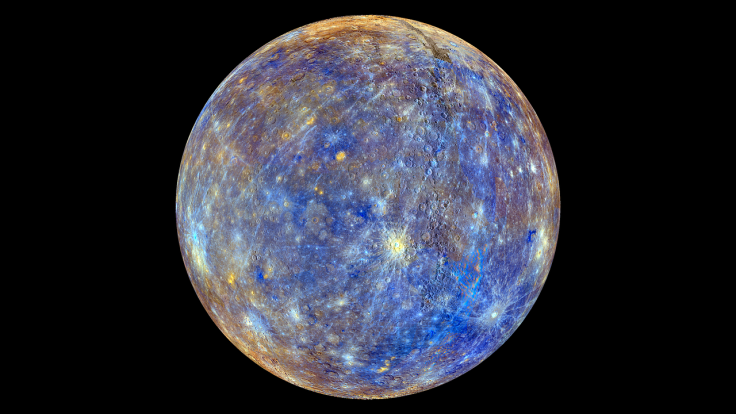Mercury’s Extreme Heat Helps Make The Planet’s Ice Caps, Study Reveals

KEY POINTS
- Temperatures in Mercury can reach up to 400 degrees Celsius
- Mercury's hot environment helps create its polar icy regions
- The ice on Mercury is permanently covered by shadows
As the closest planet to the Sun, Mercury is certainly one of the hottest planets in the Solar System. Interestingly, a new study revealed that the planet’s extreme heat is actually helping in the formation of its icy regions.
Observations on Mercury, such as NASA’s MESSENGER mission in 2011, revealed that the planet has glacial ice near its poles. The discovery of the planet’s icy regions is surprising especially since Mercury has an extremely hot environment, with daytime temperatures reaching 400 degrees Celsius.
Recently, a new study revealed that the planet’s hot climate could be responsible for the formation of Mercury’s polar ice caps. The authors of the study, which was published in the Astrophysical Journal Letters, came to this conclusion after analyzing new models of the planet.
According to the scientists, Mercury often gets pelted by solar winds from the Sun. These highly-charged particles are protons that assist in the chemical process related to the formation of water on Mercury.
The scientists explained that the protons generate compounds known as hydroxyl groups in the surface soil of the planet. Due to Mercury’s extreme heat, the hydroxyl groups get released from the soil and energizes them. This causes the compounds to smash into each other, producing hydrogen and water molecules that hover in the air and travel across the planet.
Some of the water molecules break down and evaporate as they rise above the planet’s surface. However, some of the molecules manage to reach regions near Mercury’s poles that are permanently covered by the shadows of craters.
As a result, the water molecules get shielded from the Sun. Since the planet does not have an atmosphere, it does not have air-conducting heat that can affect the water molecules. Over time, these molecules freeze and become part of the growing glacial ice on Mercury’s poles.
According to the study’s co-author Brant Jones of Georgia Tech’s School of Chemistry and Biochemistry, the concept of heat generating water and ice is not a rare phenomenon. However, finding the same chemical process occurring in an unstable environment such as Mercury is astonishing.
“This is not some strange, out of left field idea. The basic chemical mechanism has been observed dozens of times in studies since the late 1960s,” he said in a statement. “But that was on well-defined surfaces. Applying that chemistry to complicated surfaces like those on a planet is groundbreaking research.”
© Copyright IBTimes 2024. All rights reserved.





















